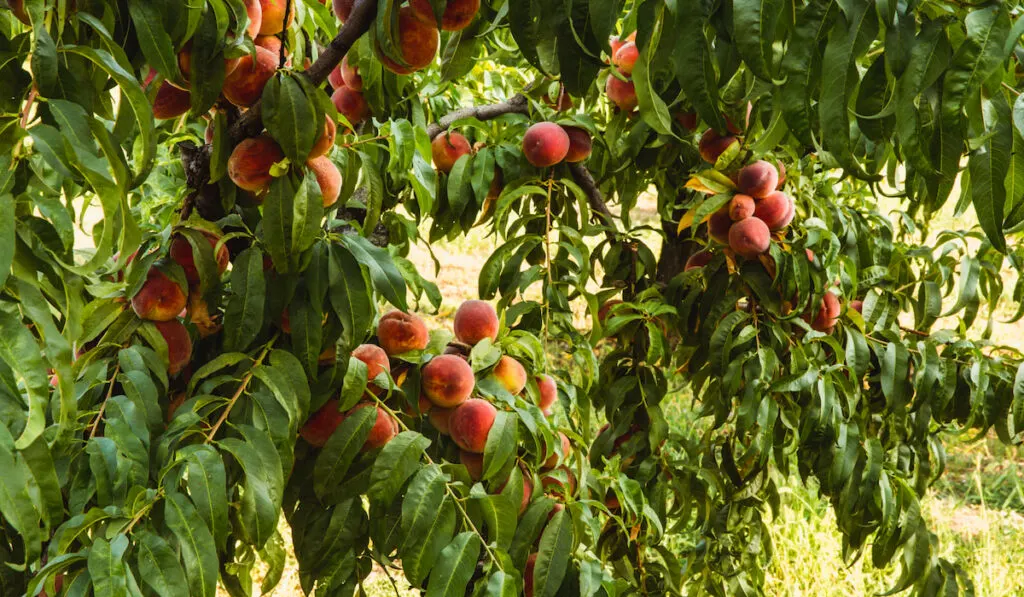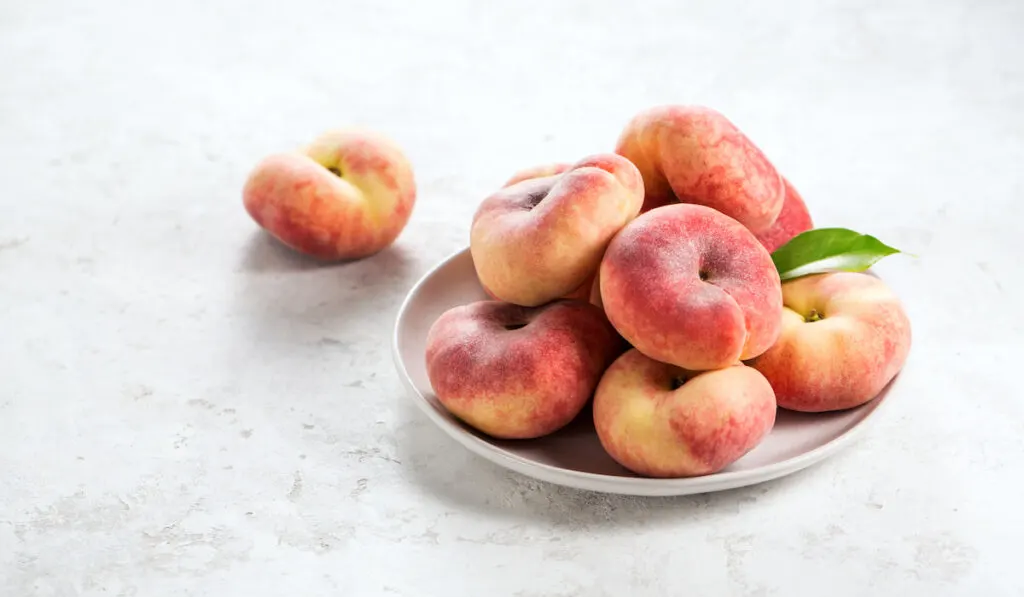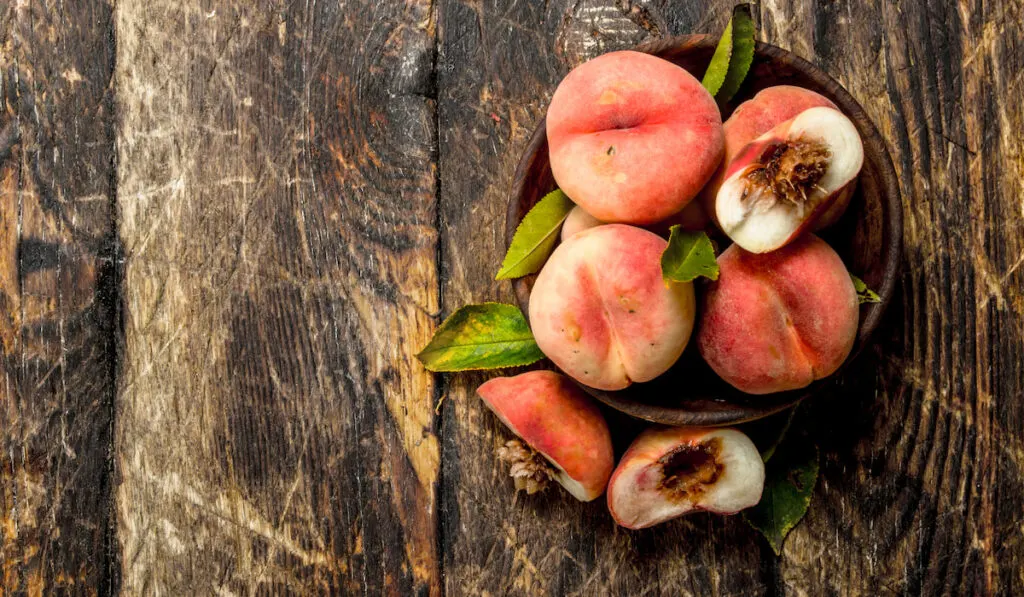Peaches might appear to have a smooth outer texture from afar. But you will notice a crease when you hold one in your hands.
If you are as curious as we are, you may wonder why peaches have a crease.
Why do peaches have a crease?
The primary purpose of fruits is seed dissemination. So, to fulfill their purpose, peaches have a crease for easy release of their pit. The crease is common to drupe fruits of the Prunus genus to which peaches belong, and it serves a similar purpose in all of them.
Below, we give further insight into the crease on peaches. We answer questions about how to keep peaches from splitting, why peaches have dimples, and much more.

Table of Contents
Why Do Peaches Have a Crease?
Peaches have a crease because they have to release the pit (the seed) so it can germinate.
Like every other fruit, peaches must release their seeds, and the presence of the crease makes the process easier.
Why Does a Peach Have the Crack?
Cracks in peaches appear due to fluctuations in moisture levels throughout the season. Underwatering or overwatering during the critical period of fruit formation can cause cracking.
Cracks can also occur when growers encourage rapid growth. Such practices include increased fertilizing and excessive thinning.
Basically, anything that can increase the size of a peach and stretch its skin can cause it to crack.
Once a peach cracks, it becomes susceptible to insect and pest damage.
What Is the Line on a Peach Called?
In botany, the line on a peach is called a suture or seam.
The suture begins to form during the development of the carpel, and its indentation may vary depending on various climatic and environmental factors. For instance, water stress will result in a deep suture.

How Do You Keep Peaches From Splitting?
Splitting is not a disease but a condition caused by irregular water supply and other practices that cause the fruit to swell rapidly.
Listed below are ways to keep your peaches from splitting.
Thin at the Appropriate Time
Excessive thinning or thinning too early can cause your peaches to split.
To prevent this, you need to thin at the appropriate time. Wait until the pits mature before thinning the clusters.
You can also choose to prune some fruit bearing-branches and not the clusters.
Provide the Trees With Consistent Soil Moisture

Ensure you provide the trees with adequate water before signs of stress appear. Avoid overwatering and do not water close to the trunk and lower branches.
Water trees thoroughly when the top 3-4 inches of the soil starts to dry.
Avoid Inconsistent Fertilizing
Use a nitrogen fertilizer during the growing season. Follow the instructions on the package to apply the fertilizer and avoid excess application.
Choose Late-Ripening Varieties
Some varieties of peaches are more prone to splitting than others. For instance, early ripening varieties are the most susceptible to splitting. So choose late varieties that will thrive in your local climate.

Why Are My Peaches Dimpled?
Your peaches are possibly dimpled because stink bugs attacked them.
When stink bugs attack peaches, they typically leave dimple-like distortions. Hence, the possibility that your peaches are dimpled because of stink bugs.
The stink bugs that feed on peaches include green stink bugs, consperse stink bugs, Uhler’s stink bugs, and Say’s stink bugs.
These bugs suck the sap from the fruit and hinder its development.
The stink bugs feeding on the peaches damages the fruit tissue. The damaged area will not grow, and the fruit will begin to develop deep dimples.

To prevent stink bugs from damaging your peaches, find ways to control them as they emerge from hibernation. You can start by removing debris and weeds around your trees.
Also, try to keep the stink bugs from moving from one tree to another. An ideal way to do this is by applying an approved insecticide to control the development of a damaging population of stink bugs.
Final Take
The crease is a line on the surface of a peach that allows it to release its pit. In botany, this line is called a suture or seam.
Besides the suture, a peach may have cracks. But unlike the suture, cracks are not there to ease the release of the pit. Instead, they appear due to uneven moisture or when the fruit takes in too much water, thus stretching the skin.
Resources:
- https://pnwhandbooks.org/insect/tree-fruit/peach-nectarine/peach-nectarine-lygus-bug-stink-bug
- https://www.melindamyers.com/articles/prevent-cracking-fruit-on-peach-tree
- https://green-infos.com/library/lecture/read/220704-why-do-peaches-have-a-line
- https://biology.stackexchange.com/questions/35264/cause-of-crease-in-drupe-fruit
- https://www.latimes.com/archives/la-xpm-1999-jul-03-hm-52470-story.html
- https://answers-to-all.com/object/why-do-peaches-split-on-the-tree/
- https://www.gardeningknowhow.com/edible/fruits/fegen/stone-fruit-pit-split.htm
- https://www.melindamyers.com/articles/prevent-cracking-fruit-on-peach-tree
- https://extensionentomology.tamu.edu/publications/catfacing-insects-on-peaches/
- https://www2.ipm.ucanr.edu/agriculture/peach/stink-bugs/
- https://homeguides.sfgate.com/fruit-splitting-95694.html
- https://courses.lumenlearning.com/wm-biology2/chapter/fruit-and-seed-dispersal/
